Themed collection 2015 most accessed Energy & Environmental Science articles

Water desalination via capacitive deionization: what is it and what can we expect from it?
Capacitive deionization (CDI) is a promising technology for water desalination that has seen tremendous advances over the past five years.
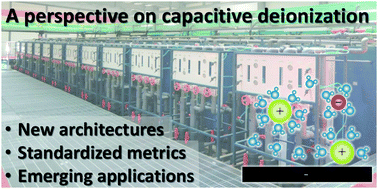
Energy Environ. Sci., 2015,8, 2296-2319
https://doi.org/10.1039/C5EE00519A
Ferroelectric materials for solar energy conversion: photoferroics revisited
Ferroelectric materials offer opportunities for unconventional solar energy conversion.

Energy Environ. Sci., 2015,8, 838-848
https://doi.org/10.1039/C4EE03523B
Tailored graphene systems for unconventional applications in energy conversion and storage devices
Graphene-based materials have shown great potential in various fields across physics, chemistry, biology, and electronics, due to their unique electronic properties, facile synthesis, and ease of functionalization.
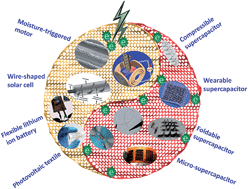
Energy Environ. Sci., 2015,8, 31-54
https://doi.org/10.1039/C4EE02594F
A review of cathode materials and structures for rechargeable lithium–air batteries
This review is specifically focused on the progress in the cathodes for non-aqueous Li–air batteries in the terms of the materials, structure and fabrication.
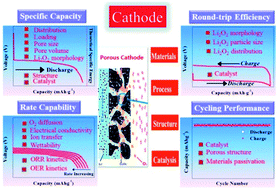
Energy Environ. Sci., 2015,8, 2144-2198
https://doi.org/10.1039/C5EE00838G
Metal–organic frameworks and their derived nanostructures for electrochemical energy storage and conversion
This review presents a summary of recent progress and strategies in fabricating MOF-based nanostructures for electrochemical applications.
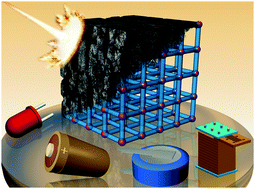
Energy Environ. Sci., 2015,8, 1837-1866
https://doi.org/10.1039/C5EE00762C
Toward the rational design of non-precious transition metal oxides for oxygen electrocatalysis
The rational design of non-precious transition metal perovskite oxide catalysts holds exceptional promise for understanding and mastering the kinetics of oxygen electrocatalysis instrumental to artificial photosynthesis, solar fuels, fuel cells, electrolyzers, and metal–air batteries.

Energy Environ. Sci., 2015,8, 1404-1427
https://doi.org/10.1039/C4EE03869J
Recent progress and perspective in solution-processed Interfacial materials for efficient and stable polymer and organometal perovskite solar cells
The latest developments in solution-processed interfacial layers for polymer and hybrid perovskite solar cells are comprehensively reviewed in this article.
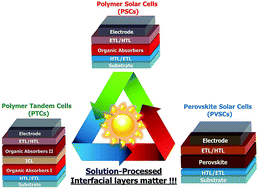
Energy Environ. Sci., 2015,8, 1160-1189
https://doi.org/10.1039/C4EE03824J
Visible-light driven heterojunction photocatalysts for water splitting – a critical review
We summarise current state-of-the-art efficient visible-light driven heterojunction water splitting photo(electro)catalysts and describe how theoretical modelling of electronic structures at interfaces can explain their functionality.
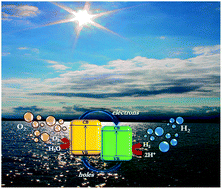
Energy Environ. Sci., 2015,8, 731-759
https://doi.org/10.1039/C4EE03271C
Flexible graphene devices related to energy conversion and storage
This review summarizes the recent advancements in the synthesis and applications of graphene materials for flexible graphene devices related to energy conversion and storage.
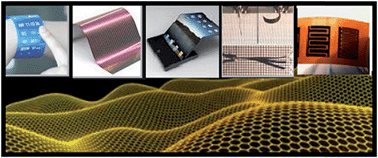
Energy Environ. Sci., 2015,8, 790-823
https://doi.org/10.1039/C4EE03685A
Supercapacitor electrode materials: nanostructures from 0 to 3 dimensions
A review of supercapacitor electrode materials with 0, 1, 2, and 3 dimensional nanostructures.
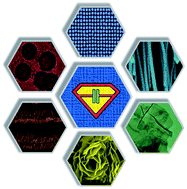
Energy Environ. Sci., 2015,8, 702-730
https://doi.org/10.1039/C4EE03229B
A comprehensive review of sodium layered oxides: powerful cathodes for Na-ion batteries
The room temperature Na-ion secondary battery has been under focus lately due to its feasibility to compete against the already well-established Li-ion secondary battery.
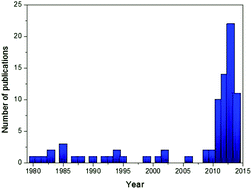
Energy Environ. Sci., 2015,8, 81-102
https://doi.org/10.1039/C4EE03192J
Hydrogen or batteries for grid storage? A net energy analysis
Storing electrical energy in hydrogen requires less manufacturing energy than batteries, per unit of energy dispatched over the system's lifetime.
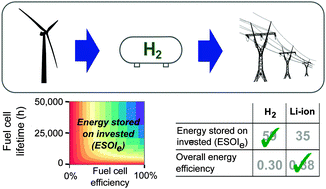
Energy Environ. Sci., 2015,8, 1938-1952
https://doi.org/10.1039/C4EE04041D
Highly efficient planar perovskite solar cells through band alignment engineering
Planar perovskite solar cells exhibit a conduction band misalignment of the perovskite with TiO2, but not with SnO2. The system using the latter yielded power conversion efficiencies over 18%.
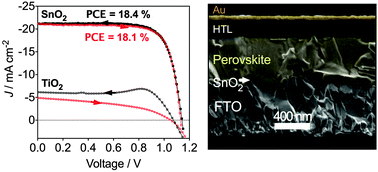
Energy Environ. Sci., 2015,8, 2928-2934
https://doi.org/10.1039/C5EE02608C
Achieving overall water splitting using titanium dioxide-based photocatalysts of different phases
Photocatalytic overall water splitting on TiO2-based photocatalysts is determined by both thermodynamics and kinetics simultaneously.
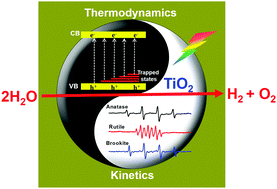
Energy Environ. Sci., 2015,8, 2377-2382
https://doi.org/10.1039/C5EE01398D
17.6% stabilized efficiency in low-temperature processed planar perovskite solar cells
Compact TiO2 is replaced by a low-temperature solution-processed TiOX/60-PCBM layer for electron extraction in perovskite solar cells with high steady conversion efficiencies.
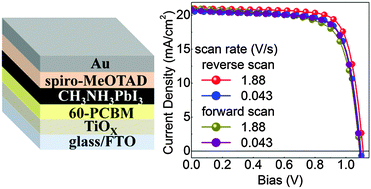
Energy Environ. Sci., 2015,8, 2365-2370
https://doi.org/10.1039/C5EE01720C
Ni2P as a Janus catalyst for water splitting: the oxygen evolution activity of Ni2P nanoparticles
Ni2P is a bifunctional catalyst for both hydrogen and oxygen evolution reactions.
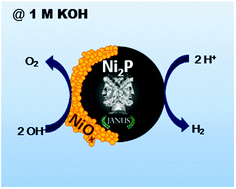
Energy Environ. Sci., 2015,8, 2347-2351
https://doi.org/10.1039/C5EE01155H
High-efficiency non-fullerene organic solar cells enabled by a difluorobenzothiadiazole-based donor polymer combined with a properly matched small molecule acceptor
Non-fullerene organic solar cells with power conversion efficiencies of up to 6.3% are reported using properly matched donor and acceptor.
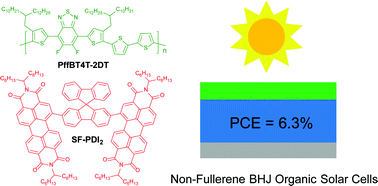
Energy Environ. Sci., 2015,8, 520-525
https://doi.org/10.1039/C4EE02990A
Dual nature of the excited state in organic–inorganic lead halide perovskites
A dual nature of the excited state of CH3NH3PbI3 perovskites is discovered, which fully identifies the spectral features in transient spectroscopy.
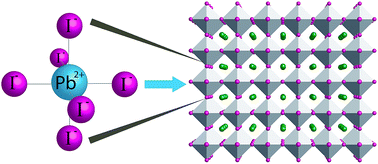
Energy Environ. Sci., 2015,8, 208-215
https://doi.org/10.1039/C4EE02988G
High efficiency stable inverted perovskite solar cells without current hysteresis
The inverted CH3NH3PbI3 cell fabricated using a two-step method with H2O as an additive in a PbI2 solution exhibited an extremely high FF of 85%.
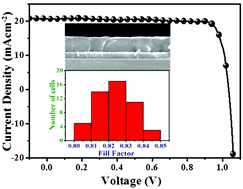
Energy Environ. Sci., 2015,8, 2725-2733
https://doi.org/10.1039/C5EE00645G
Extraordinarily efficient photocatalytic hydrogen evolution in water using semiconductor nanorods integrated with crystalline Ni2P cocatalysts
A hybrid structure constructed by uniformly anchoring crystalline Ni2P cocatalyst on 1D CdS nanorods exhibits extraordinarily efficient photocatalytic activity for H2 evolution in water (rate of 1,200 μmol h−1 mg−1 and TOF of 36,400 h−1 per mol Ni2P) under visible light irradiation.
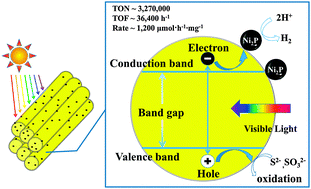
Energy Environ. Sci., 2015,8, 2668-2676
https://doi.org/10.1039/C5EE01310K
Hysteresis-less inverted CH3NH3PbI3 planar perovskite hybrid solar cells with 18.1% power conversion efficiency
The inverted CH3NH3PbI3 planar hybrid solar cells exhibited better device efficiency and stability and lower hysteresis than the normal cells.
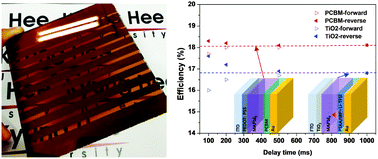
Energy Environ. Sci., 2015,8, 1602-1608
https://doi.org/10.1039/C5EE00120J
Understanding the rate-dependent J–V hysteresis, slow time component, and aging in CH3NH3PbI3 perovskite solar cells: the role of a compensated electric field
Ionic displacement modifying the electric field in the device is found as most likely reason for the hysteresis which is examined by separating fast and slow processes and comparing devices with and without blocking layer.
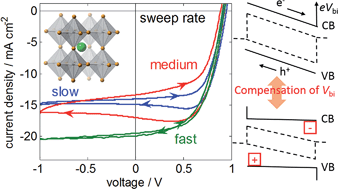
Energy Environ. Sci., 2015,8, 995-1004
https://doi.org/10.1039/C4EE03664F
Semi-transparent perovskite solar cells for tandems with silicon and CIGS
Semi-transparent perovskite solar cells with silver nanowires are stacked on CIGS and Si to achieve solid-state polycrystalline tandems with efficiency improvement.
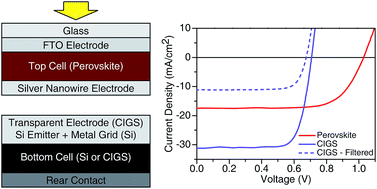
Energy Environ. Sci., 2015,8, 956-963
https://doi.org/10.1039/C4EE03322A
Highly efficient and bending durable perovskite solar cells: toward a wearable power source
We report annealing-free compact TiOx layer by atomic layer deposition for high efficiency flexible perovskite solar cells, and maintained 95% of the initial PCE after 1000 bending cycles with 10 mm bending radius.
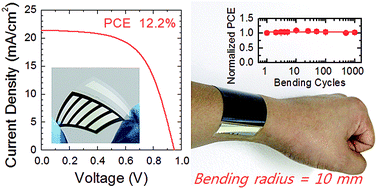
Energy Environ. Sci., 2015,8, 916-921
https://doi.org/10.1039/C4EE02441A
Hybrid interfacial layer leads to solid performance improvement of inverted perovskite solar cells
A hybrid interfacial layer of ultrathin NiO/meso-Al2O3 with minimal optical/recombination losses, leads to solid performance improvement of inverted perovskite solar cells.
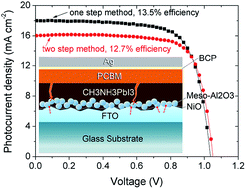
Energy Environ. Sci., 2015,8, 629-640
https://doi.org/10.1039/C4EE02833C
Optical properties and limiting photocurrent of thin-film perovskite solar cells
Thorough measurements of the optical constants of CH3NH3PbI3 are used to determine the limiting parasitic losses in solar cells revealing up to 100% IQE and excellent performance at oblique incidence.
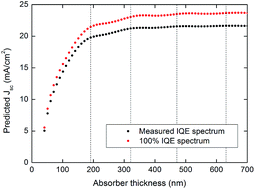
Energy Environ. Sci., 2015,8, 602-609
https://doi.org/10.1039/C4EE03224A
A metal–organic framework route to in situ encapsulation of Co@Co3O4@C core@bishell nanoparticles into a highly ordered porous carbon matrix for oxygen reduction
MOF-derived Co@Co3O4@C core@bishell nanoparticles encapsulated into a highly ordered porous carbon matrix show very high catalytic activity and stability toward the oxygen reduction reaction.

Energy Environ. Sci., 2015,8, 568-576
https://doi.org/10.1039/C4EE02281E
Record activity and stability of dealloyed bimetallic catalysts for proton exchange membrane fuel cells
New Pt–Ni catalysts were made for PEMFCs with previously unachieved ORR activity and device durability that exceed the DOE 2017 targets for commercialization.
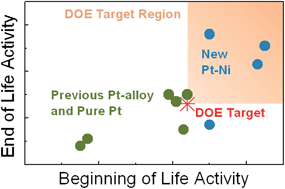
Energy Environ. Sci., 2015,8, 258-266
https://doi.org/10.1039/C4EE02144D
Direct catalytic conversion of cellulose to liquid straight-chain alkanes
A novel one-pot catalytic approach is presented that is able to directly transform cellulose into straight-chain alkanes (mainly n-hexane).
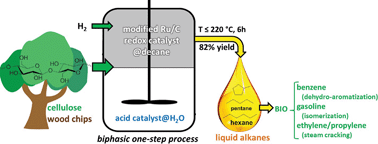
Energy Environ. Sci., 2015,8, 230-240
https://doi.org/10.1039/C4EE01523A
About this collection
This web collection highlights the top 10% most downloaded articles published in Energy & Environmental Science in 2015. Congratulations to all of the authors whose articles have been featured.